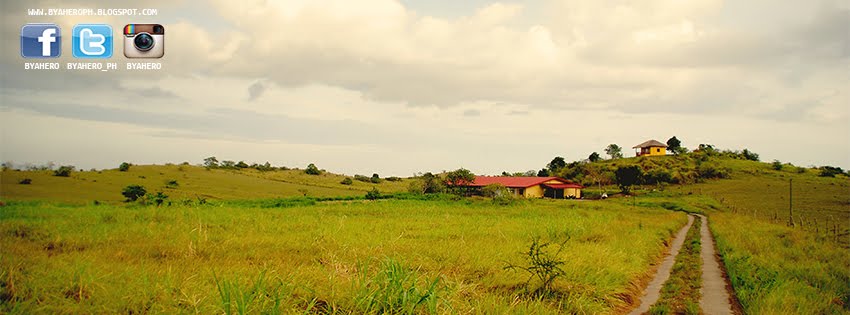Oas Puto Festival 2015 Calendar of Activities
Showing posts with label Oas. Show all posts
Showing posts with label Oas. Show all posts
Tuesday, March 24, 2015
Thursday, May 1, 2014
Monday, October 10, 2011
Tuesday, August 10, 2010
Saturday, July 17, 2010
Friday, July 16, 2010
Oas, Albay (July 15)
Oas Police Station and Municipal Hall
Oas is now reclassified as First Class municipal in the province of Albay, Philippines.
The town's economy is generally agricultural. Its major products include rice, root crops such as sweet potato and gabi (taro), coconuts, and other fruits and vegetables.
Fish and other shell foods are also harvested in its coastal areas but do not contribute much to the municipality's income. Underutilization of the town's marine products is due to limited access and transportation to its coastal areas. Farm-to-market roads are currently being constructed to alleviate this situation.
Oas Church
St. Michael Academy
The municipality was founded during the early Spanish Colonization of the Bicol Peninsula. In 1605, Father Baltazar de los Reyes converted 12 leading natives of the area to Christianity in one day, forming the foundation of the community now known as Oas.
There are three stories that tell the origin of the name of Oas:
- The existence of numerous lagoons or pools of water abounding it prompted early colonizers to give it the name of "Oasis". The natives soon called the place by this name and later abbreviated it to "Oas".
- There is a dam across the narrowest portion of a local river. This dam solely irrigates the vast fields of the place including those of the nearby town of Libon and results in a good harvest. People are wary of any cracks or leaks on the dam walls during months of heavy rains. A crier would shot "nawaswas" giving the call to the people for immediate action in groups. From then on, the natives coined this name to the place and later shortened it to present from in times of this kind emergency.
- Early Spanish Colonizers reaching this particular section of the Bicol Peninsula asked the name of the place from the about 600 natives living there, "Como se llama este sitio?" with gesture of their hands. The natives mistakenly thought the question to be, "Onan kading lugar kadi, maiwas?" (What place is this, it's very big?) in their native dialect. In response, the natives answered, "Si, señores. Labi nikading iwas. Labi nikading iwas." (Yes, sirs, this is grand and spacious). From then on the early Spanish colonizers adopted in their official census the existence of "a rich fertile valley with verdant fields of grain" which is the little town of Oas in Bicol.
Source: Wikipedia
Tuesday, July 6, 2010
Oas Church
The Oas Church in Oas, Albay was founded by Franciscan Missionaries in 1605 with Fray Marcos de Lisboa as first curate. Bigger church and convent of volcanic rocks and bricks constructed under the direction of Fray Francisco de Anunciacion O. Peñaranda in 1825. Both damaged by fire in 1866 and reconstructed by Fray Francisco de Aragones the same year. Subsequent damages by earthquake and typhoon repaired by Fray Manuel de Brihueg in 1884. Transept of the church annexed by Fray Santos Herrejon, 1873-1878. Convent remodeled by Fray Carlos Cabido, 1889; totally destroyed by typhoon, 25 December 1947. Part of church roofing damaged by same typhoon; restored by M.R.P. Luis Dimadumba, 1948.
Thursday, July 1, 2010
Subscribe to:
Comments (Atom)
Popular Posts
-
Festivals in Camarines Norte • Pinyasan Festival – Camarines Norte • Rahugan Festival - Basud • Palong Festival - Capalonga • Bant...
-
Guling Guling Festival 2014 March 1 - 4 | Paoay, Ilocos Norte
-
If you're thinking of attending the Catandungan Festival 2013, you're in for a treat. Every year, people flock in the street...
-
Adlaw Sang Tigbauan October 20 - 25, 2013 Tigbauan, Iloilo
-
GO NEGOSYO FESTIVAL 2013 October 4-6, 2013 Gaisano Grand Atrium, Koronadal City, South Cotabato 3rd Negosyo Festival Schedule...
-
Araña't Baluarte Festival 2014 Schedule of Activities
-
The town of Tarlac has had a colorful and significant history. Its story may very well be story of Tarlac province itself, which came into b...
-
Pinangat Festival 2013 Schedule of Activities June 10 - 24 | Camalig, Albay ---- Source: Jan Edmund Dominic Bailon
Popular Posts
-
Festivals in Camarines Norte • Pinyasan Festival – Camarines Norte • Rahugan Festival - Basud • Palong Festival - Capalonga • Bant...
-
Adlaw Sang Tigbauan October 20 - 25, 2013 Tigbauan, Iloilo
-
Guling Guling Festival 2014 March 1 - 4 | Paoay, Ilocos Norte
-
If you're thinking of attending the Catandungan Festival 2013, you're in for a treat. Every year, people flock in the street...
-
The town of Tarlac has had a colorful and significant history. Its story may very well be story of Tarlac province itself, which came into b...
-
GO NEGOSYO FESTIVAL 2013 October 4-6, 2013 Gaisano Grand Atrium, Koronadal City, South Cotabato 3rd Negosyo Festival Schedule...
Popular Posts
-
Festivals in Camarines Norte • Pinyasan Festival – Camarines Norte • Rahugan Festival - Basud • Palong Festival - Capalonga • Bant...
-
St. Luke's Medical Center is a tertiary referral hospital located in Bonifacio Global City, Taguig City. It is the most advanced ho...
-
CALENDAR OF FESTIVITIES JANUARY January 1 | NEW YEAR’S DAY (Holiday) January 1 | AGUMAN SANDUK | Minalin, Pampanga Januar...
-
Green Park Resort, Atimonan Quezon RESORTS & HOTELS IN ATIMONAN, QUEZON PROVINCE De Gracia Beach Resort Brgy. Balubad 0923‐7...
-
PHILIPPINE FESTIVALS AND EVENTS JANUARY 2016 January 1 | NEW YEAR’S DAY (Holiday) January 1 | AGUMAN SANDUK | Minalin, Pa...
-
OAK PARK HOTEL & RESIDENCES Padillo Building, Enriquez cor. Hermana Fausta Sts., 4301 Lucena City Phone: (042) 373-6764 or 710-6148 DIAM...
-
The Oriental Legazpi Hotels THE ORIENTAL LEGAZPI (First Class) Sto. Nino Village, Taysan, Legazpi City Tel: (+632) 470 9737 | 404 7501 |...






.jpg)








.jpg)


.jpg)


